The Tribological Properties of Multi-Layered Graphene as Additives of PAO2 Oil in Steel–Steel Contacts
Abstract
:1. Introduction
2. Experiments
2.1. Materials
2.2. Instruments and Experimental Parameters
3. Results and Discussion
3.1. Coefficients of Friction (COF)
3.2. Anti-Wear Behaviors
3.3. Lubrication Mechanism
4. Conclusions
Acknowledgments
Author Contributions
Conflicts of Interest
References
- Berman, D.; Deshmukh, S.A.; Sankaranarayanan, S.K.R.S.; Erdemie, A.; Sumant, A.V. Macroscale superlubricity enabled by graphene nanoscroll formation. Science 2015, 348, 1118–1122. [Google Scholar] [CrossRef] [PubMed]
- Berman, D.; Erdemir, A.; Sumant, A.V. Graphene: A new emerging lubricant. Mater. Today 2014, 17, 31–42. [Google Scholar] [CrossRef]
- Zhang, S.W. Green tribology—The way forward to a sustainable society. In Proceedings of the International Tribology Congress—ASIATRIB, Perth, Australia, 5–9 December 2010; Volume 6.
- Zhang, S.W. Green tribology: Fundamentals and future development. Friction 2013, 1, 186–194. [Google Scholar] [CrossRef]
- Zhang, S.W. Recent developments of green tribology. Surface Topogr. Metrol. Prop. 2016, 4, 023004. [Google Scholar] [CrossRef]
- Totten, G.E. Handbook of Hydraulic Fluid Technology; CRC Press: Boca Raton, FL, USA, 2011. [Google Scholar]
- Adhvaryu, A.; Erhan, S.Z.; Perez, J.M. Tribological studies of thermally and chemically modified vegetable oils for use as environmentally friendly lubricants. Wear 2004, 257, 359–367. [Google Scholar] [CrossRef]
- Erdemir, A. Advances In novel nanolubrication additives for improved friction and wear properties. In Proceedings of the 5th World Tribology Congress, Torino, Italy, 8–13 September 2013.
- Novoselov, K.S.; Geim, A.K.; Morozov, S.V.; Jiang, D.; Zhang, Y.; Dubonos, S.V.; Grigorieva, I.V.; Firsov, A.A. Electric field effect in atomically thin carbon films. Science 2004, 306, 666–669. [Google Scholar] [CrossRef] [PubMed]
- Nair, R.R.; Blake, P.; Grigorenko, A.N.; Novoselov, K.S.; Booth, T.J.; Stauber, T.; Peres, N.M.R.; Geim, A.K. Fine structure constant defines visual transparency of graphene. Science 2008, 320, 1308. [Google Scholar] [CrossRef] [PubMed]
- Lee, C.; Wei, X.D.; Kysar, J.W.; Hone, J. Measurement of the elastic properties and intrinsic strength of monolayer graphene. Science 2008, 321, 385–388. [Google Scholar] [CrossRef] [PubMed]
- Bolotin, K.I.; Sikes, K.J.; Jiang, Z.; Klima, M.; Fudenberg, G.; Hone, J.; Kim, P.; Stormer, H.L. Ultrahigh electron mobility in suspended graphene. Solid State Commun. 2008, 146, 351–355. [Google Scholar] [CrossRef]
- Jia, Z.; Chen, T.; Wang, J.; Ni, J.; Li, H.; Shao, X. Synthesis, characterization and tribological properties of Cu/reduced graphene oxide composites. Tribol. Int. 2015, 88, 17–24. [Google Scholar] [CrossRef]
- Liu, X.W.; Mao, J.J.; Liu, P.D.; Wei, X.W. Fabrication of metal-graphene hybrid materials by electroless deposition. Carbon 2011, 49, 477–483. [Google Scholar] [CrossRef]
- Liu, W.; Chung, C.H.; Miao, C.Q.; Wang, Y.J.; Li, B.Y.; Ruan, L.Y. Chemical vapor deposition of large area few layer graphene on Si catalyzed with nickel films. Thin Solid Films 2010, 518, S128–S132. [Google Scholar] [CrossRef]
- Sim, H.S.; Kim, T.A.; Lee, K.H.; Min, P. Preparation of graphene nanosheets through repeated supercritical carbon dioxide process. Mater. Lett. 2012, 89, 343–346. [Google Scholar] [CrossRef]
- Pu, N.W.; Wang, C.A.; Sung, Y.; Liu, Y.M.; Ger, M.D. Production of few-layer graphene by supercritical CO2 exfoliation of graphite. Mater. Lett. 2009, 63, 1987–1989. [Google Scholar] [CrossRef]
- Lin, J.S.; Wang, L.W.; Chen, G.H. Modification of graphene platelets and their tribological properties as a lubricant additive. Tribol. Lett. 2011, 41, 209–215. [Google Scholar] [CrossRef]
- Kinoshita, H.; Nishina, Y.; Alias, A.A.; Fujii, M. Tribological properties of monolayer graphene oxide sheets as water-based lubricant additives. Carbon 2014, 66, 720–723. [Google Scholar] [CrossRef]
- Berman, D.; Erdemir, A.; Sumant, A.V. Few layer graphene to ewduce wear and friction on sliding steel surfaces. Carbon 2013, 54, 454–459. [Google Scholar] [CrossRef]
- Song, H.J.; Li, N. Frictional behavior of oxide graphene nanosheets as water-base lubricant additive. Appl. Phys. A Mater. Sci. Process. 2011, 105, 827–832. [Google Scholar] [CrossRef]
- Elomaa, O.; Singh, V.K.; Iyer, A.; Hakala, T.J.; Koskinen, J. Graphene oxide in water lubrication on diamond-like carbon vs. stainless steel high-load contacts. Diam. Relat. Mater. 2015, 52, 43–48. [Google Scholar] [CrossRef]
- Min, C.; Nie, P.; Song, H.J.; Zhang, Z.; Zhao, K. Study of tribological properties of polyimide/graphene oxide nanocomposite films under seawater-lubricated condition. Tribol. Int. 2014, 80, 131–140. [Google Scholar] [CrossRef]
- Senatore, A.; D’Agostino, V.; Petrone, V.; Ciambelli, P.; Sarno, M. Graphene oxide nanosheets as effective friction modifier for oil lubricant: Materials, methods, and tribological results. ISRN Tribol. 2013, 2013, 425809. [Google Scholar] [CrossRef]
- Eswaraiah, V.; Sankaranarayanan, V.; Ramaprabhu, S. Graphene-based engine oil nanofluids for tribological applications. ACS Appl. Mater. Interfaces 2011, 3, 4221–4227. [Google Scholar] [CrossRef] [PubMed]
- Juś, A.; Kamiński, M.; Radzikowska-Juś, W. Influence of graphene nanoflakes addition on grease tribological properties. In Proceedings of the 22th International Conference on Applied Physics of Condensed Matter, Štrbské Pleso, Slovakia, 22–24 June 2016; pp. 307–310.
- Missala, T.; Szewczyk, R.; Winiarski, W.; Hamela, M.; Kamiński, M.; Dąbrowski, S.; Pogorzelski, D.; Jakubowska, M.; Tomasik, J. Study on tribological properties of lubricating grease with additive of graphene. In Progress in Automation, Robotics and Measuring Techniques; Springer International Publishing: Berlin/Heidelberg, Germany, 2015; pp. 181–187. [Google Scholar]
- Zhang, W.; Zhou, M.; Zhu, H.; Tian, Y.; Wang, K.; Wei, J.; Ji, F.; Li, X.; Li, Z.; Zhang, P.; et al. Tribological properties of oleic acid-modified graphene as lubricant oil additives. J. Phys. D Appl. Phys. 2011, 44, 205303. [Google Scholar] [CrossRef]
- Jia, Z.; Pang, X.; Li, H.; Ni, J.; Shao, X. Synthesis and wear behavior of oleic acid capped calcium borate/graphene oxide composites. Tribol. Int. 2015, 90, 240–247. [Google Scholar] [CrossRef]
- Li, L.; Li, G.H.; Li, Y.F.; Gao, J.S.; Xu, C.M. Preparation of graphene from graphite by supercritical CO2 exfoliation assisted with fluid shear. Chin. Sci. Bull. 2015, 60, 2561–2566. (In Chinese) [Google Scholar] [CrossRef]
- Li, L.; Xu, J.; Li, G.; Jia, X.; Li, Y.; Yang, F.; Zhang, L.; Xu, C.; Gao, J.; Liu, Y.; et al. Preparation of graphene nanosheets by shear-assisted supercritical CO2 exfoliation. Chem. Eng. J. 2016, 284, 78–84. [Google Scholar] [CrossRef]
- Xiao, H.; Dai, W.; Kan, Y.; Clearfield, A.; Liang, H. Amine-intercalated α-zirconium phosphates as lubricant additives. Appl. Surface Sci. 2015, 329, 383–389. [Google Scholar] [CrossRef]
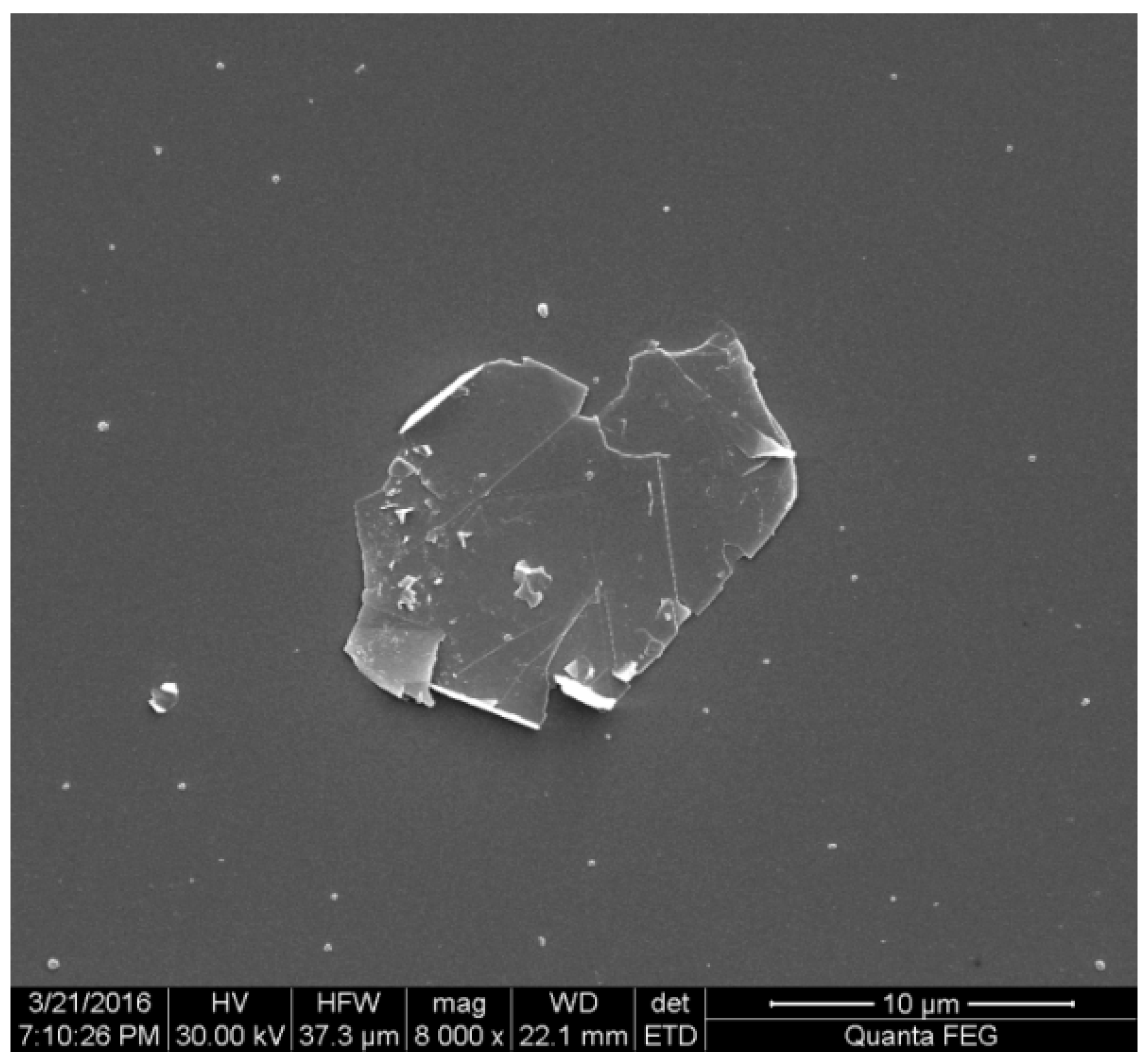

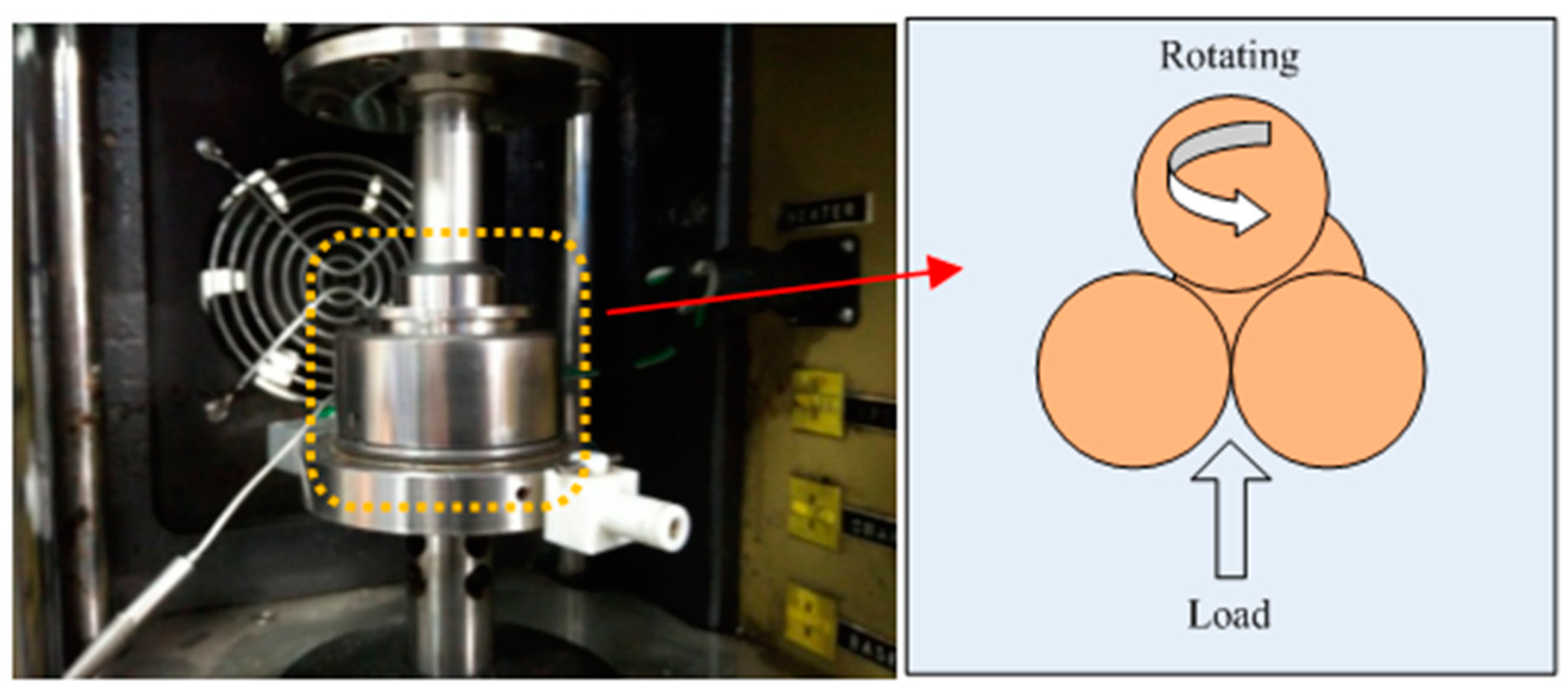
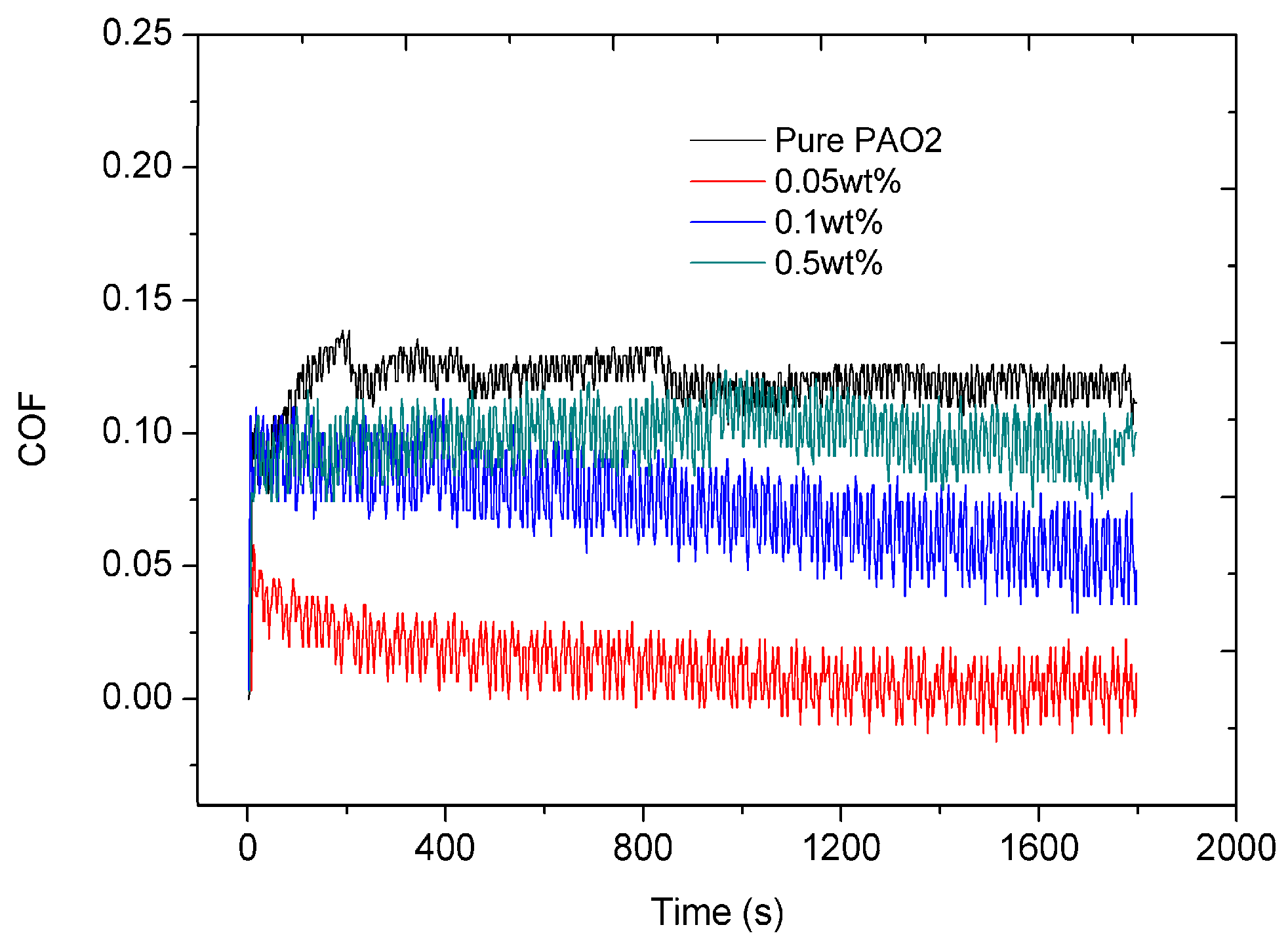
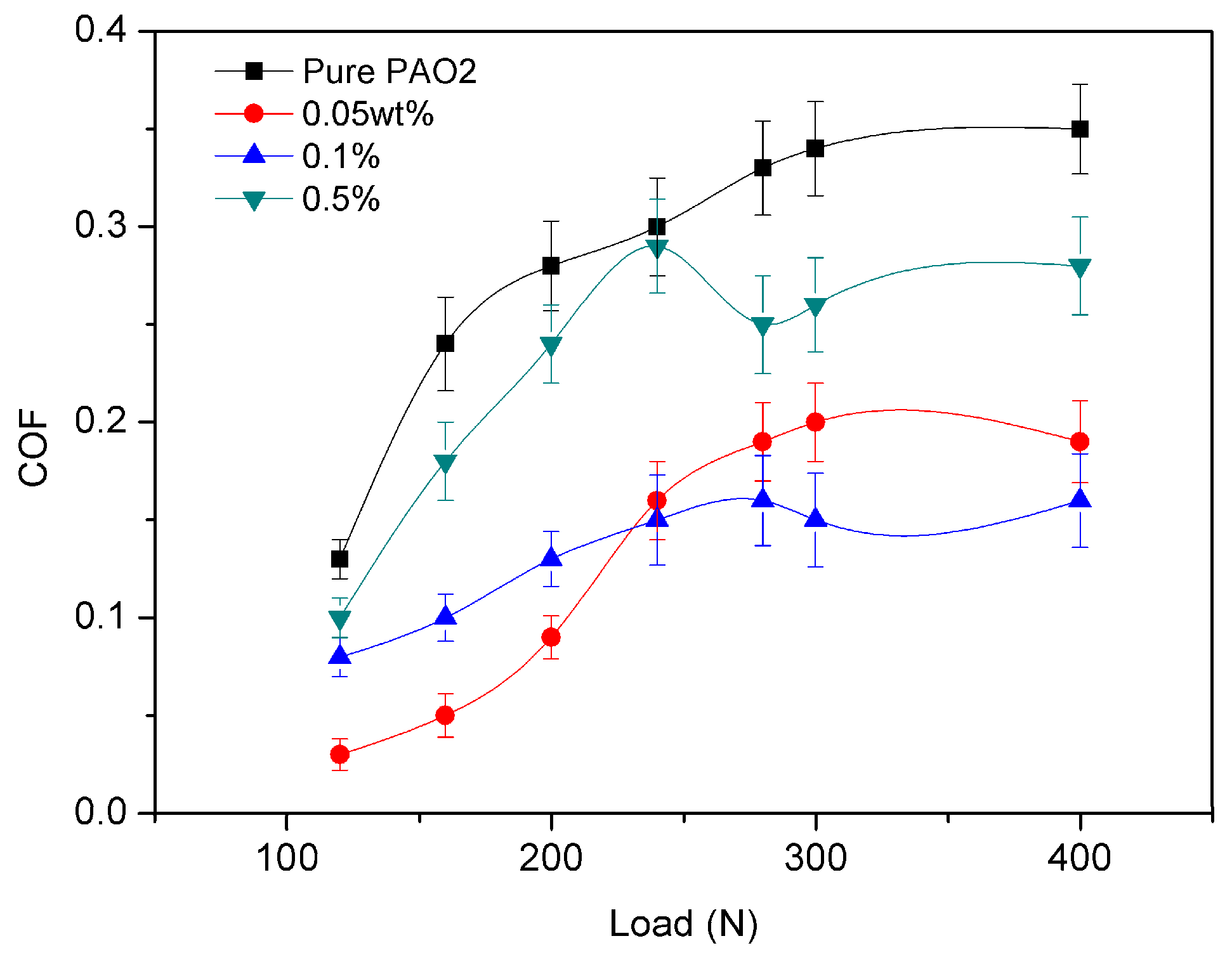
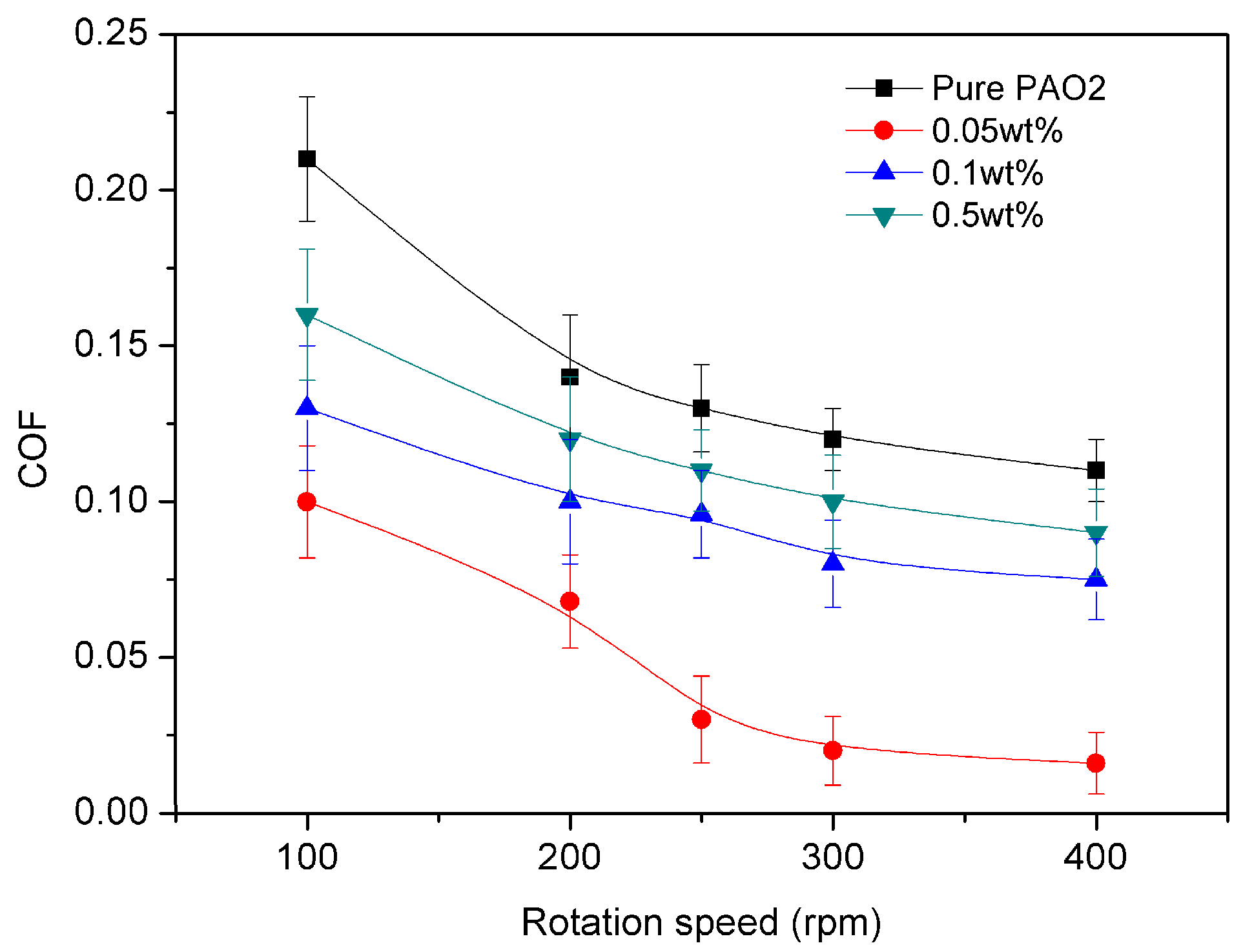

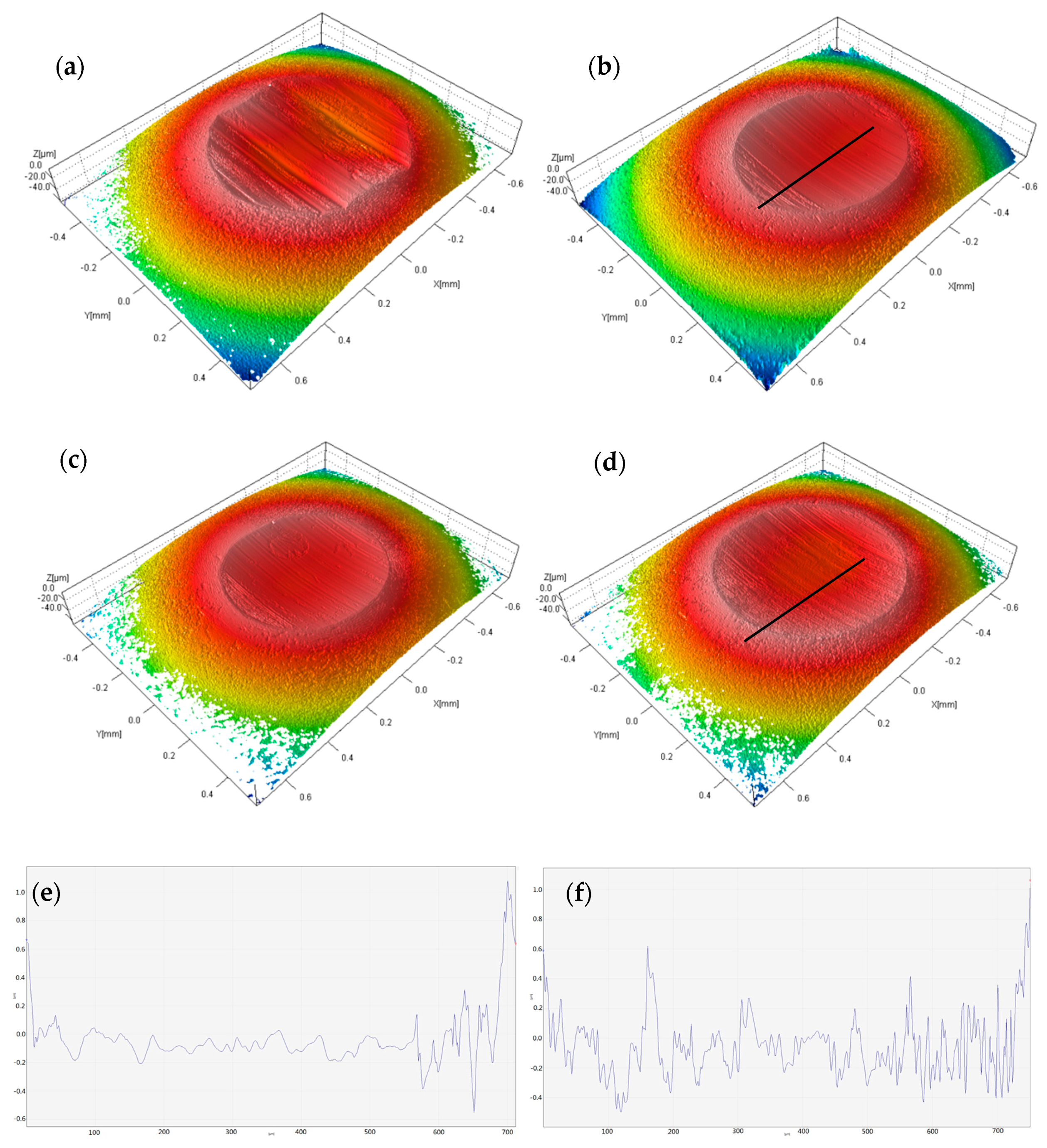
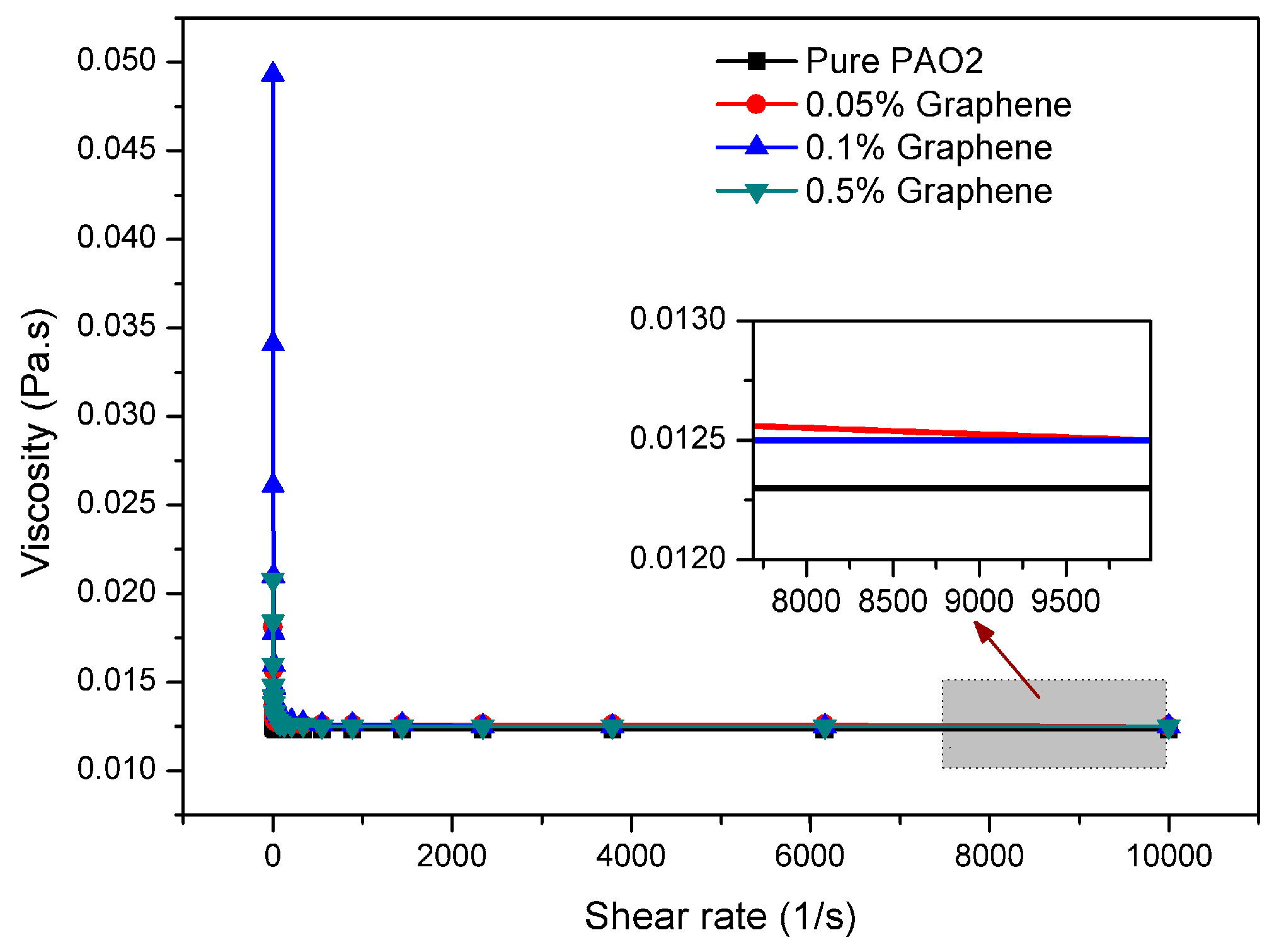

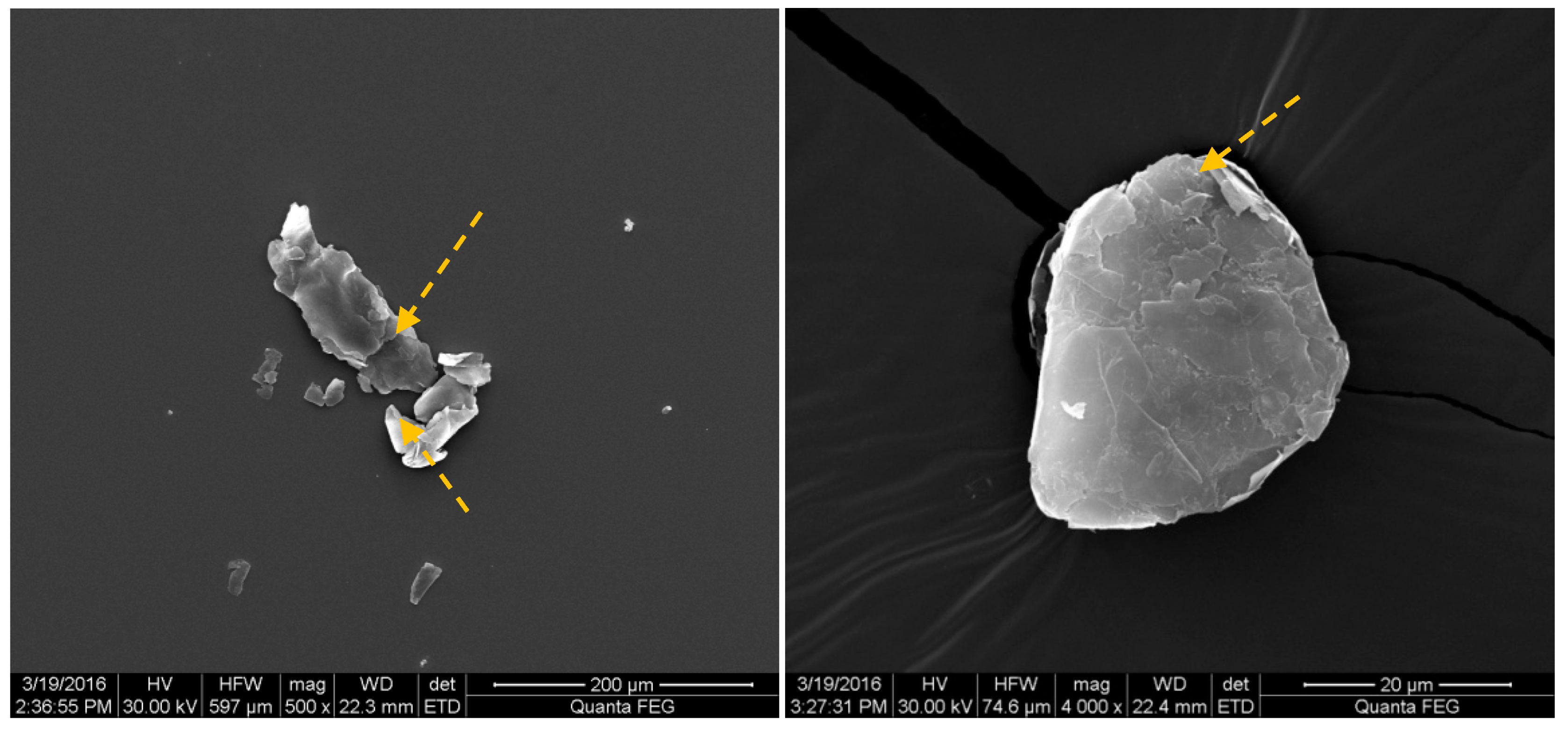
© 2016 by the authors; licensee MDPI, Basel, Switzerland. This article is an open access article distributed under the terms and conditions of the Creative Commons Attribution (CC-BY) license (http://creativecommons.org/licenses/by/4.0/).
Share and Cite
Guo, Y.-B.; Zhang, S.-W. The Tribological Properties of Multi-Layered Graphene as Additives of PAO2 Oil in Steel–Steel Contacts. Lubricants 2016, 4, 30. https://doi.org/10.3390/lubricants4030030
Guo Y-B, Zhang S-W. The Tribological Properties of Multi-Layered Graphene as Additives of PAO2 Oil in Steel–Steel Contacts. Lubricants. 2016; 4(3):30. https://doi.org/10.3390/lubricants4030030
Chicago/Turabian StyleGuo, Yan-Bao, and Si-Wei Zhang. 2016. "The Tribological Properties of Multi-Layered Graphene as Additives of PAO2 Oil in Steel–Steel Contacts" Lubricants 4, no. 3: 30. https://doi.org/10.3390/lubricants4030030




